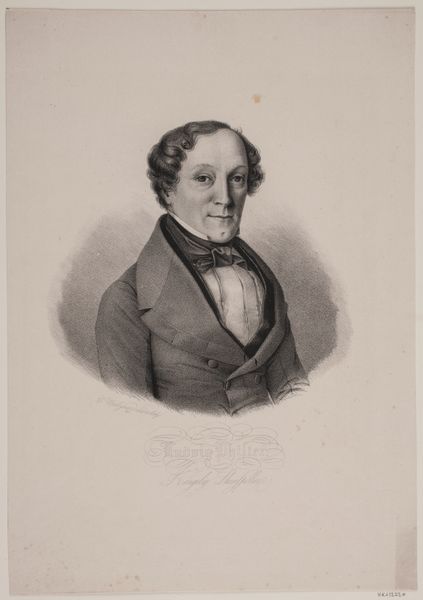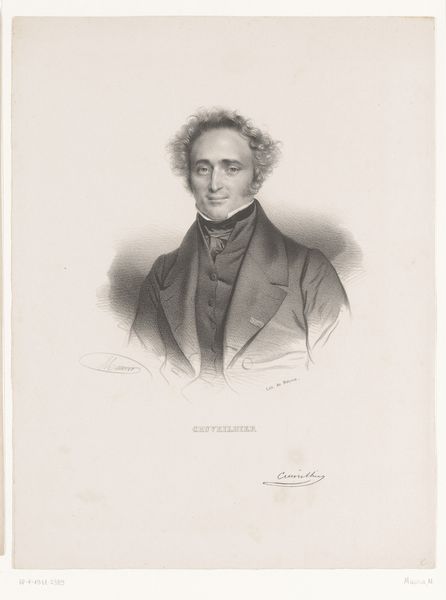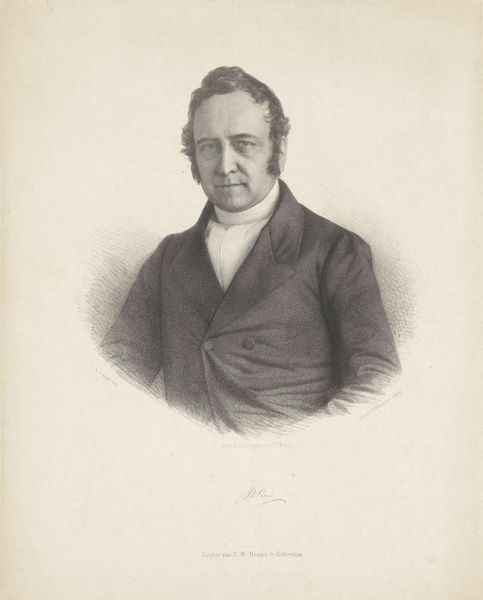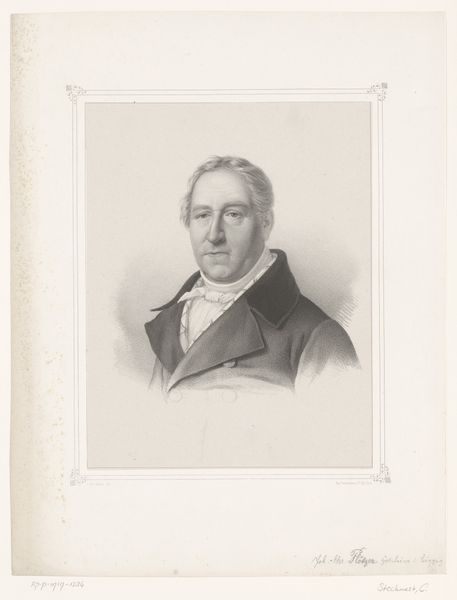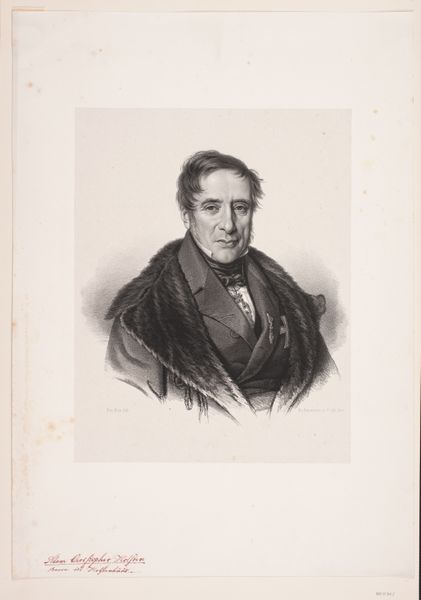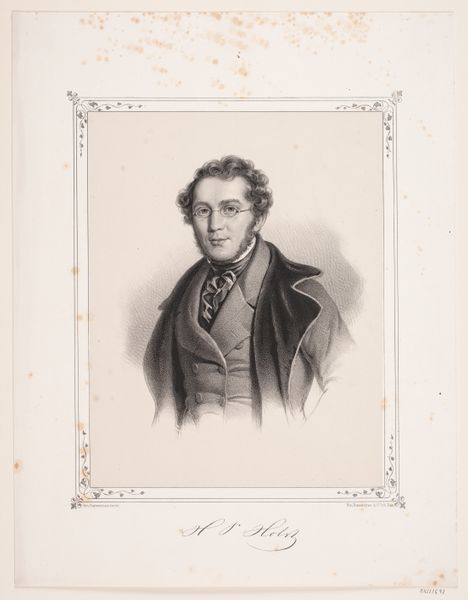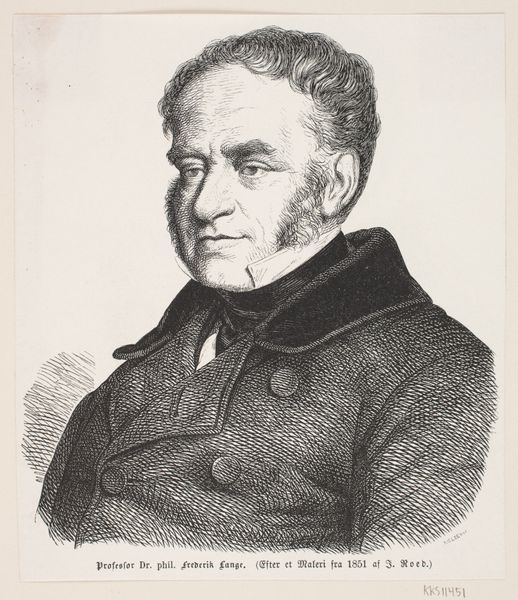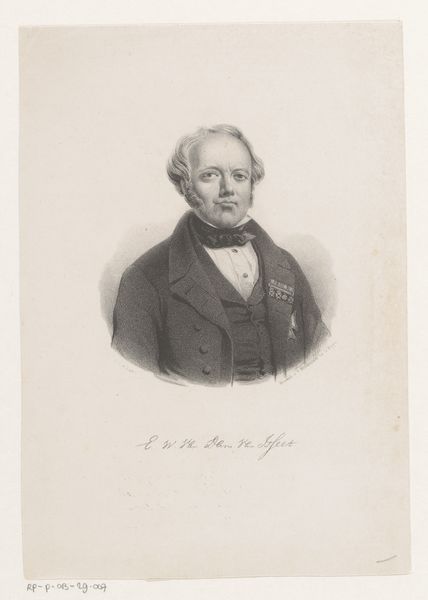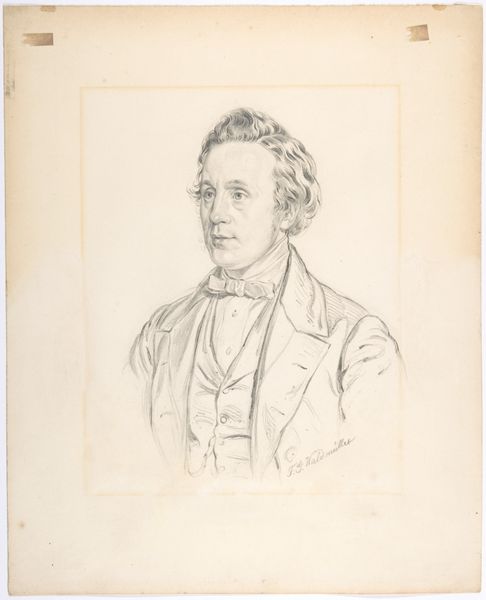
print, woodcut, engraving
#
portrait
# print
#
woodcut
#
history-painting
#
engraving
#
realism
Dimensions: 220 mm (height) x 188 mm (width) (bladmaal)
Curator: Up next we have a striking piece of 19th-century portraiture rendered as a print at the SMK - Statens Museum for Kunst. This is a rendering of H.C. Ørsted. Editor: The stark contrasts immediately capture your attention, don’t they? The artist's meticulous layering of lines creates such depth, especially in the depiction of his coat. There's a kind of weight to it, both visually and perhaps metaphorically. Curator: Absolutely. Ørsted was, after all, a pivotal figure in the history of electromagnetism. Consider the social implications, as realism gains popularity through portraits like these. These prints enabled the proliferation of bourgeois values of individual character and professional life. In this portrait, you have Ørsted memorialized for his achievements and in effect, idealized for public consumption. Editor: I appreciate how the stark black ink models his face with such precision, revealing his slightly furrowed brow. It communicates intellectual seriousness, doesn't it? I wonder about the role of line itself. The engraving's reliance on sharply etched strokes mimics the scientific spirit of inquiry prevalent at the time. It makes the whole medium almost part of the scientific establishment itself, in a subtle way. Curator: Certainly. There's also the dimension of power here, wouldn't you agree? Even as printed images like these brought portraiture and knowledge more widely into public hands, their reproduction relied on technologies like woodcut and engraving, processes dominated by male practitioners. So, while it democratizes access in one sense, in another it shores up existing structures of power and knowledge production. The portrait presents a very particular kind of man who has access to, creates, and then distributes scientific discoveries. Editor: It’s interesting how even something that feels so formally constrained as a black and white engraving manages to reveal such nuanced layers. The visual weight that I first noticed translates beautifully into the weight of the history. Curator: A fitting demonstration of the convergence of art, science and social order in 19th-century Europe.
Comments
No comments
Be the first to comment and join the conversation on the ultimate creative platform.
